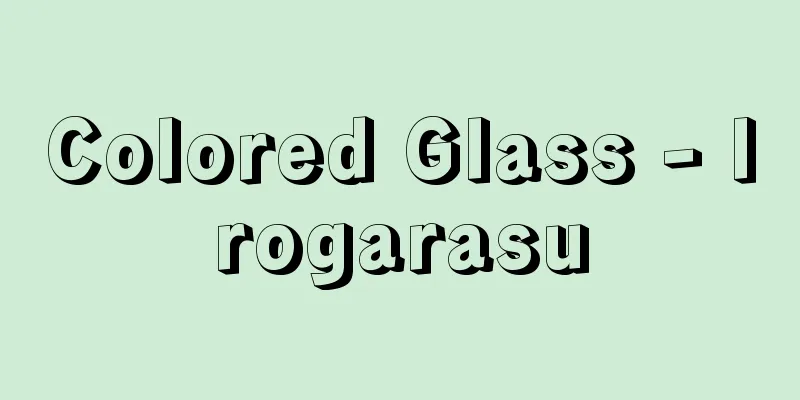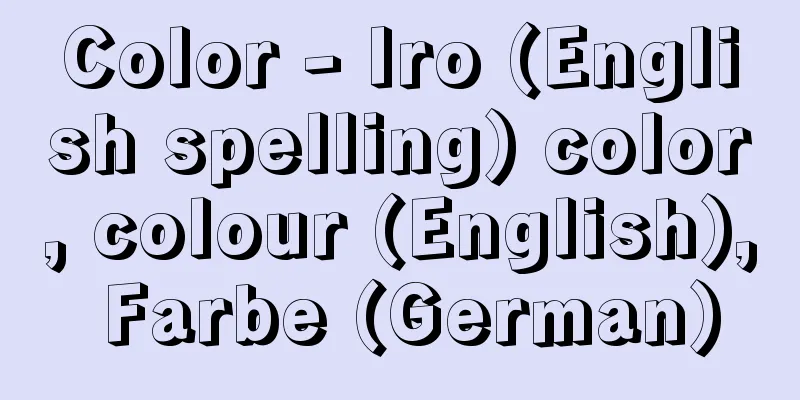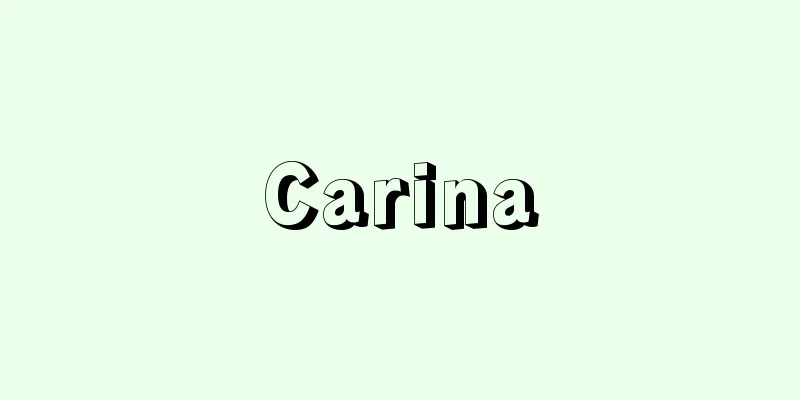Colored Glass - Irogarasu

|
It is also called colored glass. The transmittance of incident light in the visible range varies depending on the wavelength, so glass appears colored. The causes and methods of coloring can be classified as follows. [ I ] Coloring by glass-forming substances: Mn 3+ + Fe 2+ → Mn 2+ + Fe 3+ The following reactions occur, causing a change in color. [ IV ] Other: Source: Morikita Publishing "Chemical Dictionary (2nd Edition)" Information about the Chemical Dictionary 2nd Edition |
|
着色ガラスともいう.可視領域の入射光に対する透過率が波長により違うため,着色して見えるガラス.着色の原因および着色方法は以下のように分類できる.【Ⅰ】ガラス形成物質による着色: Mn3+ + Fe2+ → Mn2+ + Fe3+ などの反応が起こり,色調に変化を生じる.【Ⅳ】その他: 出典 森北出版「化学辞典(第2版)」化学辞典 第2版について 情報 |
Recommend
Giganturidae
…They live in the tropical Atlantic Ocean at dept...
Onmatsuri Sarugaku - Festival Sarugaku
Sarugaku is performed at the festival of Kasuga Wa...
dormant volcano
...Therefore, volcanoes from ancient geological t...
Jeong Gam-rok
A prophetic book that was circulated among the gen...
Parasesarma pictum (English spelling)
…They are popular as pets. The closely related Pa...
down bow
…It was Corelli and Vivaldi who first explored th...
Ganesh Himal (mountain)
A mountain range in the eastern Himalayas, east of...
Sir
〘Noun〙① (Sir) In the UK, this is an honorific used...
Mirzapur
… [Indian Rock Paintings] A huge number of rock p...
Goldsmith - Goldsmith
A pill made and sold in Kyoto's Shinomiya, Yam...
Hunger - Ugh
1. To be hungry. The state of being hungry. Hunger...
Otoguishiki - Otoguishiki
...It is located on Itsukushima Island (Miyajima-...
Cicero Romão Batista
...It is also called Juazeiro. When Father Cicero...
Petrel (water-calming bird) - Petrel
A general term for birds in the Procellariidae fam...
Chaulmoogra tree
An evergreen tall tree of the family Carpinaceae n...









